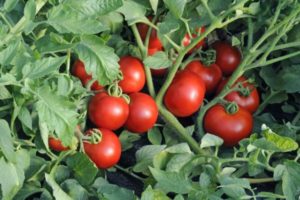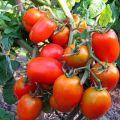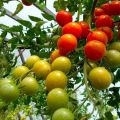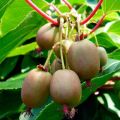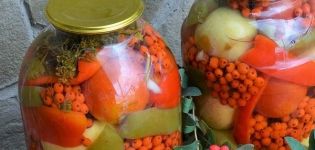Description and characteristics of liana varieties of tomatoes
Central and South America are considered the birthplace of tomatoes. The Siberian liana was cultivated by the ancient Indians, the plant was called "cytotomatom". In Europe, the word “tomato” was used to designate the plant in 1572, in Italy a little earlier - in 1554, the tomato was first called “tomato” (golden apple), hence the name of the tomato - tomatoes. At first, in Siberia, they were considered inedible, even poisonous; they were grown in gardens as an ornamental, less often as a medicinal plant. Only at the end of the 17th century, liana-shaped tomatoes began to be cultivated as an agricultural crop. Since then, many different varieties have been bred for every taste, they have taken a worthy place in gardening, and are ubiquitous.
Vegetation time
The ripening time for tomatoes is different. Today they are divided into ultra-early (fruits ripen 65-75 days after planting), early (ripen in 75-90 days), middle late - the slowest (begin to bear fruit in 90-100 days). According to the growing season, according to the type of bush, the height of the plant itself, tomatoes are subdivided for growing in the open field or in a greenhouse. For open ground, tomatoes of a small growth, more compact, early ripening varieties are more suitable; in greenhouses, tall, medium and medium-late growing varieties are preferred.
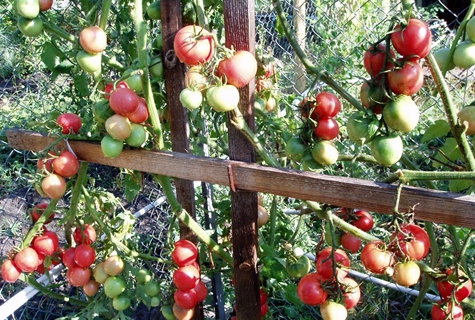
Liana
Liana-like varieties - basically all indeterminate, tall. They are more productive than undersized ones, from a bush you can get from 10 to 30 kg, sometimes more. Tomatoes African liana with high taste. Since the ripening period is longer, fresh fruits can be harvested before late autumn frosts (if grown in a greenhouse). Tall, liana-like varieties are highly resistant to disease.
Feature and Description
The African Pink Liana variety was bred in Louisville, Kentucky, from there it moved to Ohio, and from there it spread further. This variety is officially called African Vining. This is a tall tomato, indeterminate, mid-season. Better to grow it in greenhouses. Like most tomatoes with heart-shaped fruits, the bush is thin, up to two m high. The bushes are slightly leafy, the leaves are ordinary, thin, slightly drooping.
Fruits of the "Bull Heart" variety, weighing up to 350 g, very fleshy, with granular pulp, low-seeded. The best formation is 1-3 stems. Average yield.
a brief description of
- tall (2 m);
- mid-season;
- indeterminate, form 3-4 stems;
- deep pink fruits;
- the pulp is dense, grainy, sweet;
- for salads, juices;
- cultivation in greenhouses.
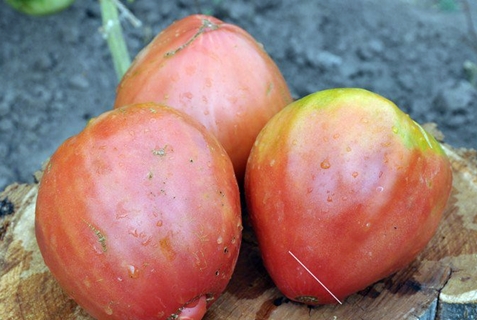
Description of fruits
Heart-shaped red liana in ripeness stage of deep pink color. Weight - 150-350 g, fleshy, dense, almost no seeds and juice. The pulp is granular. The taste is excellent, sweet, balanced. The fruits are good for fresh consumption, for making juices, beautiful and aromatic when cut.
Growing seedlings
In February (from 10 to 20), two months before planting in the ground, the seeds should be soaked in a solution of potassium permanganate (saturated pink) for 30-40 minutes, rinsed under running water, soaked in water for a day. Then the seeds must be slightly dried, spread over the soil prepared in containers, sprinkled with the same soil (about 1 cm).
IMPORTANT: Water carefully - you can use a spoon or from a syringe with drops, but do not allow excess moisture - so that the seeds do not rot.
Sprouted seedlings should be gradually accustomed to growing in the open field - in good weather, when it is already warm, they should be gradually taken out into the air.

Landing
Podsinskaya liana is planted at a distance of at least a meter from each other; between rows - a meter and a half, no less. Tomatoes are best planted at an angle, which promotes the formation of additional roots. Later, tomato bushes can still be spud. Shallow irrigation grooves can be left between the rows.
Garter
Tomatoes grow quickly in early summer, so the bushes require a garter. For tall plants, trellises are most optimal, to which the grown bushes are tied. This provides the tomatoes with good ventilation, uniform illumination, are less affected by diseases: they do not shade each other, they are easy to care for.
IMPORTANT: If the tomatoes are planted in a greenhouse, you need to carefully monitor watering - do not allow an excess of moisture in the soil, ventilate the greenhouse regularly, and leave it open in summer.

Grassing tall tomatoes
To get a good harvest, the bushes must be pinned so as not to thicken the planting. Stepsons, even overgrown ones, must be broken out without leaving stumps. So say the reviews of happy owners.
